This story originally appeared in i-D’s The Summer! Issue, no. 372, Summer 2023. Order your copy here.
In early May, we sat down with Ludovic de Saint Sernin to discuss his posting as the creative director of Ann Demeulemeester and the debut collection he had presented during Paris Fashion Week. Just a fortnight later, his sudden departure was announced to the industry’s shock. Here, the enigmatic designer discusses his work and intentions at the house in his only major interview during his tenure at its helm.
Before last December, when Ludovic de Saint Sernin was appointed to the helm of Ann Demeulemeester, they were two names you’d rarely hear in the same breath. Since founding his namesake label in 2017, a devout community has congregated around Ludovic’s expressly sensual, proudly glitzy and unabashedly queer vision, with the 32-year-old Parisian designer positioned as a mascot for an era of internet-native extroversion. Ann Demeulemeester, on the other hand, is a patron saint for if-you-know-you-know style disciples, with her pan-generational cult flocking to her for clothes that ooze dark romance and punkish glamour, mostly designed in the late 90s and early 2000s; a sombre, bohemian elegance that has exerted an influence on fashion ever since. Saying that the designers were diametrically opposed would be pushing it, but it is fair to say that they occupied disparate places along the fashion spectrum.
Yet, it may come as a surprise to hear, the two are spiritual kin. That’s not necessarily something that professes itself when looking at the collections created by their eponymous labels, though, as we’ll later discuss, keen eyes will recognise numerous parallels. Rather, the common ground they share lies in the close relationship between two of their perennial figures of inspiration: Robert Mapplethorpe and Patti Smith. The former’s photography has served as a constant point of reference for Ludovic, while the latter shares a decades-long close friendship and collaborative relationship with Ann. “Robert Mapplethorpe has been a huge influence in both my personal life and my work; he’s heavily informed the way that I look at art, fashion and life in general,” Ludovic opines from his airy Haut Marais apartment, dressed in a chicly austere all-black look. “It was through him that, when I was 24, I read Patti Smith’s book Just Kids, and discovered more about her and their relationship. Realising that Patti had been a muse for Ann, like Robert has been for me, created a bond I’d never considered before.”
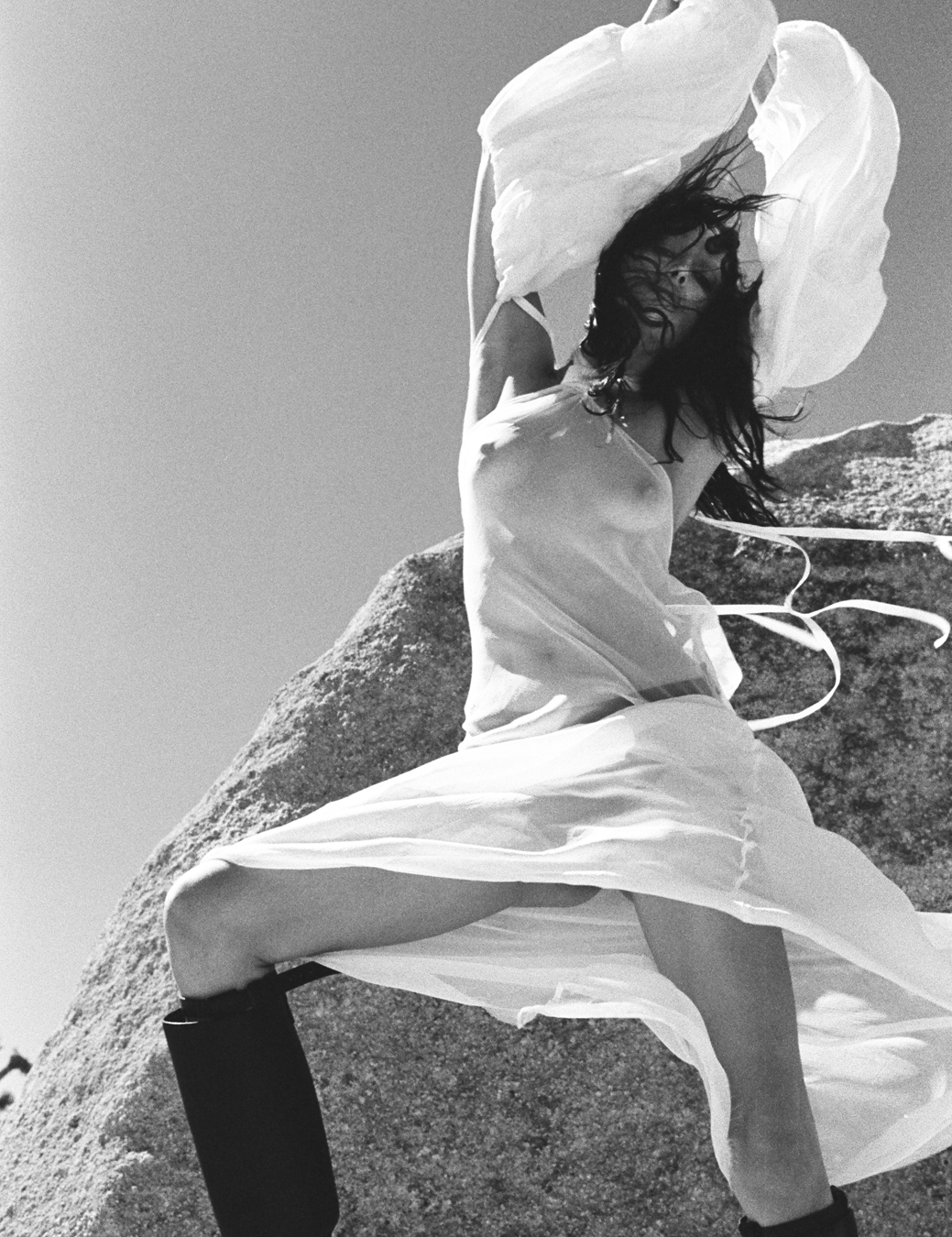
The aura of kismet around Ludovic’s appointment to the helm of Ann Demeulemeester only strengthens on learning that his formal introduction to the fashion industry came by way of Dominique Vinant, the legendary casting director who worked with Ann on her shows during the brand’s 90s and 00s heyday. An attendee at his 2012 graduate show at École Duperré, the prestigious Parisian fashion school – which Ludovic also happened to cast – Dominique swiftly approached Ludovic to both applaud his honed eye and invite him to assist her in casting a Yohji Yamamoto show she was working on.
It was an opportunity he jumped at, recognising the critical role that casting plays in shaping a brand’s visual identity. His subsequent learnings, though, weren’t just about understanding how to pick a face; it also introduced him to a world of fashion beyond the prim Parisian ideal he’d been exposed to. “Working with Dominique really introduced me to an entirely new world of fashion. It’s how I discovered the anti-fashion movement, especially the Antwerp Six, and therefore Ann,” he says. “Discovering her work really blew my mind. It was so different from everything I’d studied or seen growing up in Paris, dreaming of big fashion houses like Saint Laurent and Dior. It felt so personal, and really told the story of a woman living in her time, creating fashion for herself, her peers and the people that she believed to be a part of her world.”
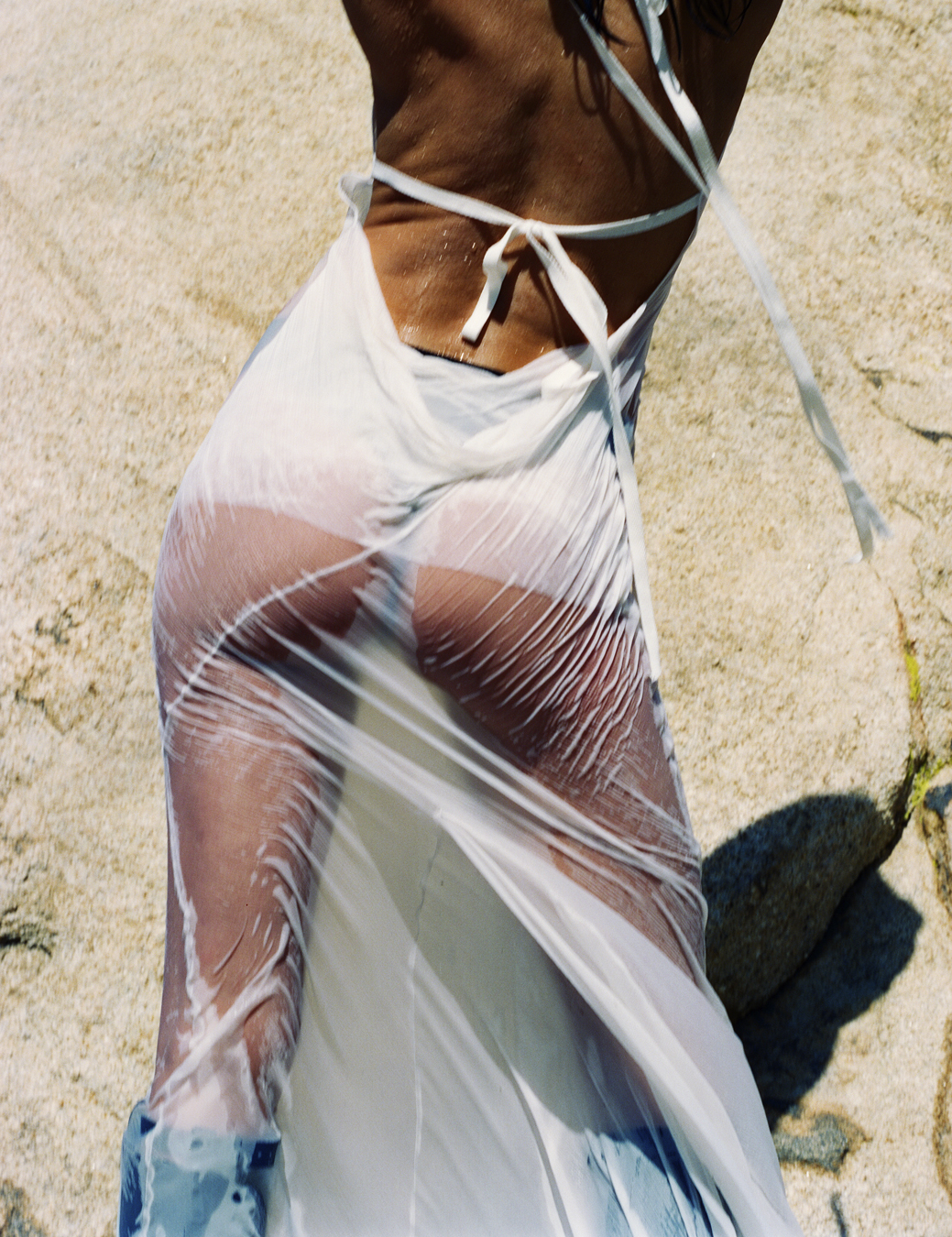
It’s an ethos that’s echoed in Ludovic’s namesake brand: an adamantly autobiographical, community-minded approach to design. Look back across Ludovic’s archive and you’ll also discover a subtle yet pronounced aesthetic affinity, one that makes itself felt especially strongly in his earlier collections – replete with moody, lean tailoring in inky satins, scrims of shadowy gauze and eyelet embellishments, all of which remain pillars of his namesake label today. Indeed, this common spirit was clear enough for Claudio Antonioli, the Italian fashion entrepreneur who acquired the Ann Demeulemeester brand in 2020, to believe that the appointment made perfect sense.
Granted, that wasn’t necessarily the case for all the ears the announcement landed on late last year, but it certainly piqued curiosity. It positioned Ludovic among a coterie of precocious new-gen designers entrusted with the keys to houses that are, in their own way, pillars of fashion history; elsewhere, there is Harris Reed at Nina Ricci and Maximilian Davis at Ferragamo. As impressive as it is to reach such heights at the age of 32, doing so naturally comes with a daunting amount of attention for Ludovic. “I was aware of how much anticipation there was for the show, because it’s a cult brand, and when you’re the new designer, people are like, ‘What is he going to do?’ There’s so much pressure when you start a job like this because there are a lot of opinions,” Ludovic says. “It was so different to working on LdSS, because that comes from my heart, and it can’t really be compared to anybody else’s work. With Ann, though, there’s a past, and with that past comes certain expectations.”
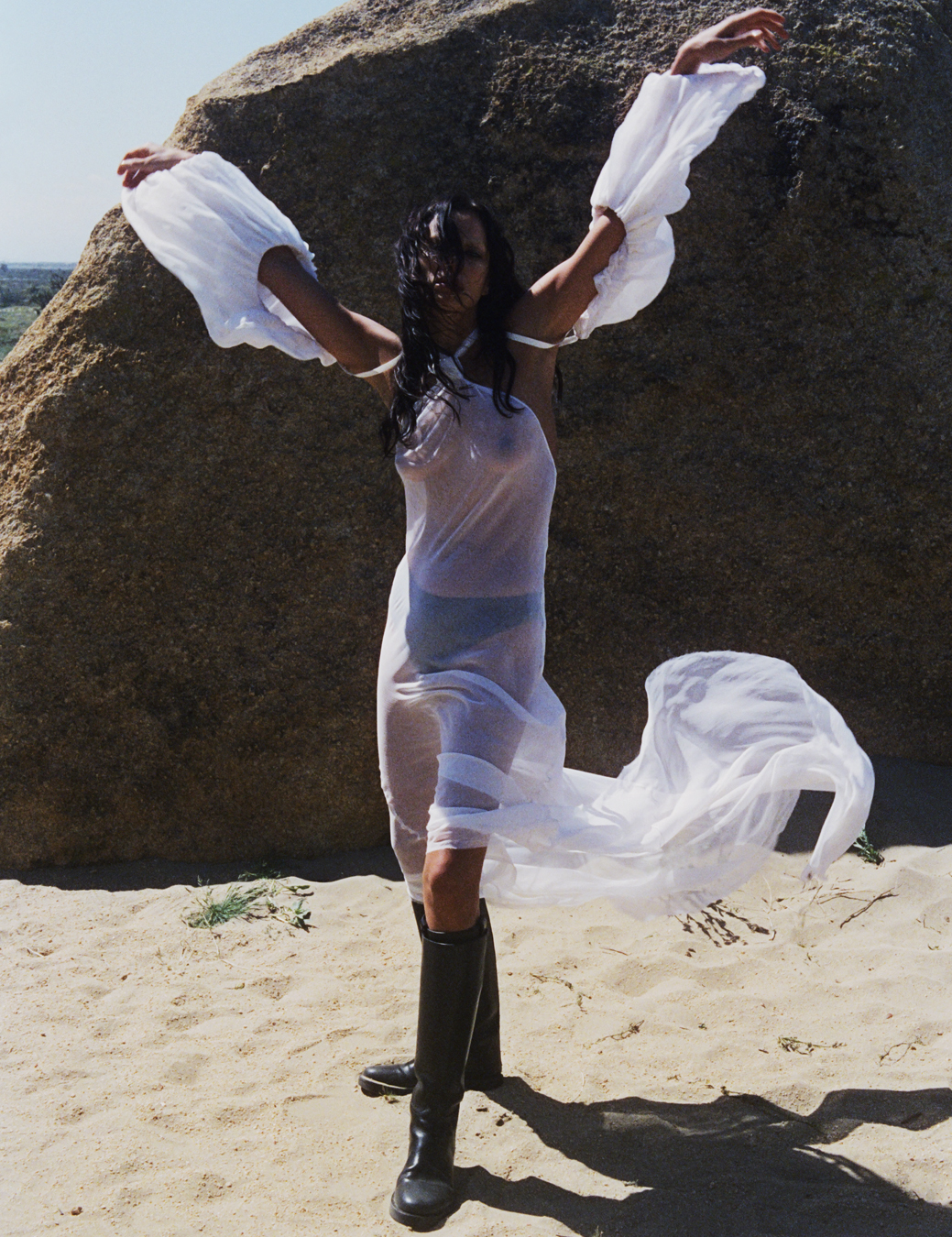
Rather than try to kowtow to his conception of what they were, though, he did the opposite, consciously shutting them out. “I was very protective about the work, and the process was very private and intimate. I had a very precise idea of what I wanted to do, and I wanted to make sure that that concept was as clear on the day of the show as it was on day one,” he says. “The way that I looked at it, I was trying to bind myself with Ann’s heritage and legacy; to be very respectful of her work but also be daring with it and make it my own.”
Looking back on it, the collection he presented in the blacked-out hall of an upmarket lycée, did just that. A clean-lined, predominantly monochrome proposal, it articulated the pared-back sartorial grammar of Ludovic’s chapter for the label – one rooted in the foundations that Ann laid. A homage to the almost sacred value that feathers hold in the brand’s symbolic repertoire, an auburn-tressed Lainey Hearn — plucked from the darkness by a row of harsh, runway-trained spotlights — opened the show with a single black feather (well, it was actually painstakingly crafted in leather) tied about her bosom, with a languid, mermaid-tail skirt in inky bias-cut satin precariously clinging to her hips. This then built out into slim, square-shouldered suits, worn open, with tie-close white poplin shirts with elongated cuffs beneath. These tailored looks – cut in a way that made them impossible to fasten, bearing the wearer’s chest – were repeated in buttery black and maroon leather, and worn with clodhopper leather riding boots, an Ann Demeulemeester staple that firmly anchored the collection in the brand’s rich heritage. Ludovic’s long-standing yen for showing skin came into full bloom in the womenswear looks that comprised itsy-bitsy boleros and flouncy ostrich feather stoles, both of which swaddled the wearer’s arms and necks, but would’ve left their breasts bare were it not for their own crossed arms.
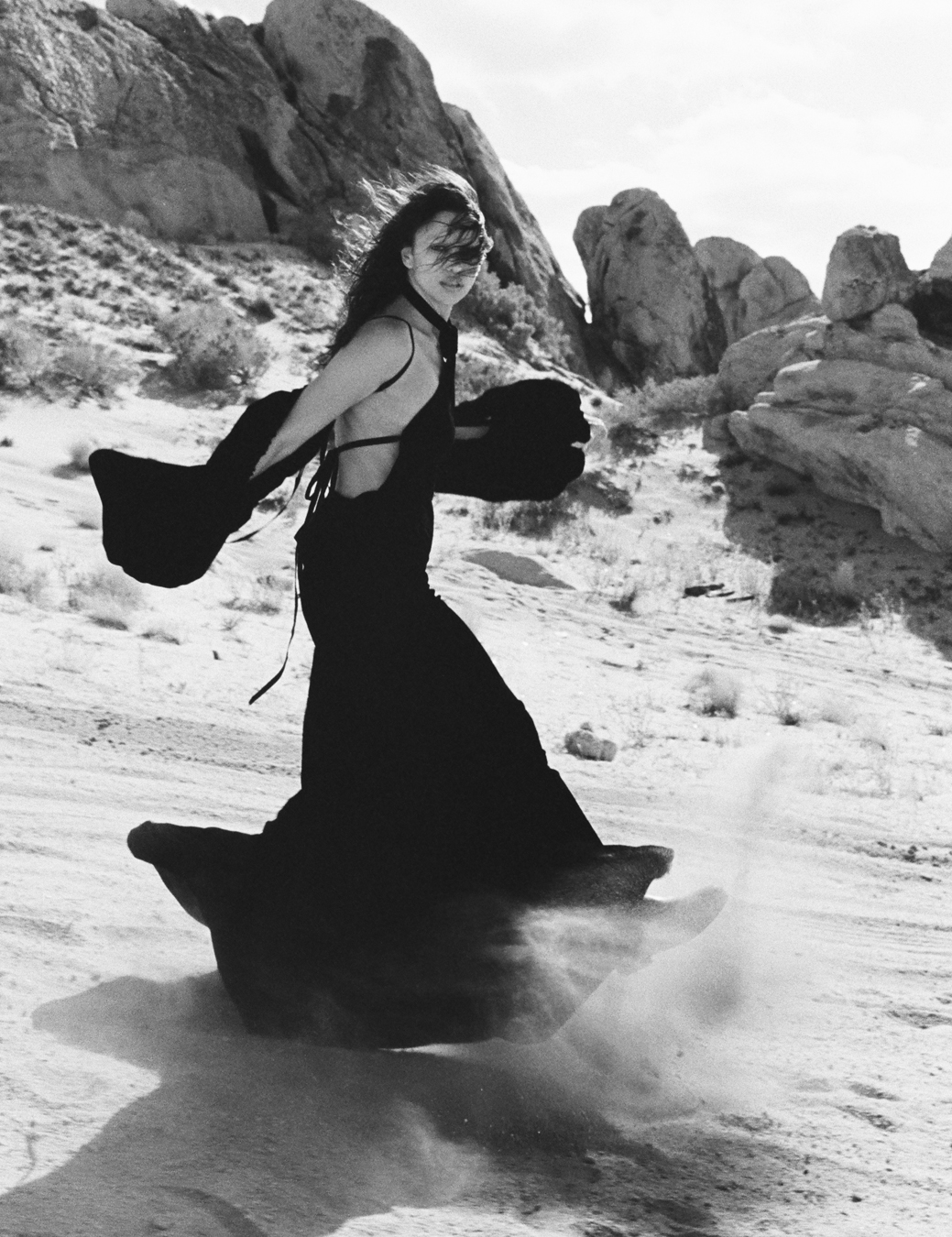
To many spectators, it struck a powerful image, one of empowered feminine sensuality – and that’s the way the models saw it, too. “Anok Yai was like, ‘Oh, this is for me. This is my moment. I’m going to walk so slowly and so sensually… You’re going to have to kick me off this runway!’” Ludovic laughs. Still, there were commentators who viewed the gesture – particularly coming from a brand that has often been viewed as one that offers a sanctuary from the overt sexualisation of women’s bodies – as needlessly risqué.
Rather than a product of a base desire to show more skin, though, Ludovic’s intention was to draw profound links to Ann and her work. “We were looking for a position that was comfortable for the girls to walk in, and the way we did that was by creating a shape on the body that looked like a dove,” he says. “Birds and feathers were such a huge source of inspiration for Ann, so it was really about creating a poetic gesture that reflected that. For us, it was more of a self-embrace, and a message of self-love.” Not to mention that it was also a direct nod to the brand’s archive, with the models who walked its SS95 show adopting similar poses, and Ann’s earlier collections – particularly those around the turn of the millennium – making ample use of body-revealing sheer fabrics and loose mohair knits.
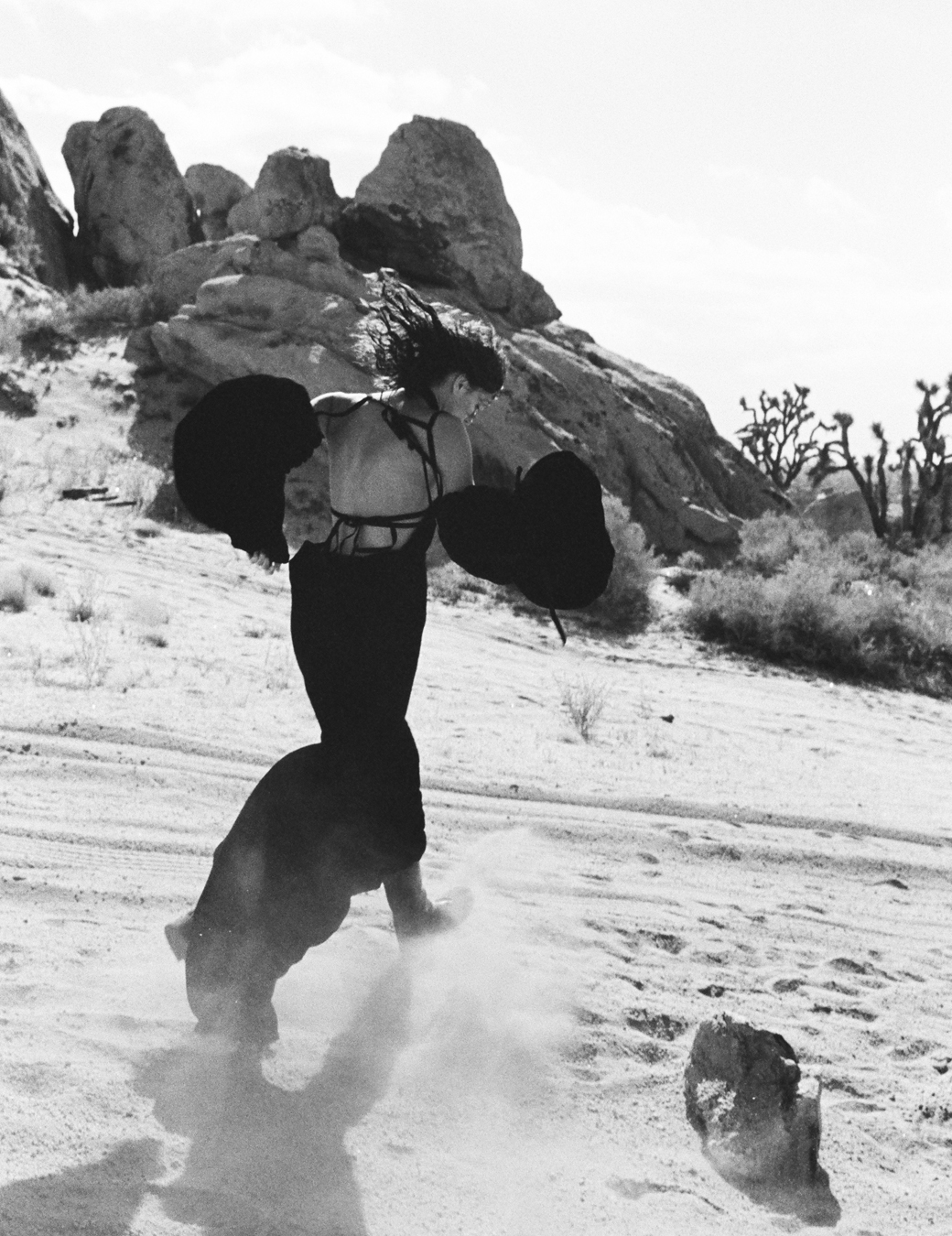
While wariness of the sensual charge that Ludovic has brought to Ann Demeulemeester is understandable, it also belies a patchy understanding of the brand’s historical remit. Indeed, when Ludovic first began to excavate its archive, it was exactly this sensibility that caught his eye. Taking the designer’s namesake book, an encyclopaedic visual document of every Ann Demeulemeester collection published by Rizzoli in 2014, as his point of departure, he scoured the archive in search of looks that he felt resonated with his conception of what the brand could represent today. “I feel like in recent years, the general impression of the brand has been that it’s quite masculine, but looking through these images,” particularly at Ann’s work during the mid-late 90s and early 00s, “I saw a lot of skin, femininity and sensuality, which isn’t necessarily what you would expect. There was a real confidence, strength and sexiness to it, and it became really important for me to bring that to my chapter of the brand.”
After settling on an edit of around 80 looks, Ludovic summoned them from
the archive to try on each for himself. Indeed, the experience of wearing Ann Demeulemeester’s clothes, as any Ann D acolyte will tell you, can only ever be understood and never fully explained. “It was actually my first time wearing Ann. I wanted to know how it felt on my skin – the fabric with the cuts, the details with the textures,” Ludovic says, visibly lavishing in his recollection. “Her clothes are fascinating to look at on a hanger, but it’s only when you try them on that you realise how easy and natural they are – they just feel simple, smart, spontaneous and unique. But also, I just wanted to know what it felt like to be Stella Tennant, Kate Moss or Carolyn Murphy walking out in these pieces,” he continues, “and think of how I could then inject that energy into what I was going to present.” Indeed, a preliminary insight into how this process would culminate came with the announcement of Ludovic’s tenure, when six Willy Vandeperre-shot images of the new designer in archive pieces he would later go on to reference in his debut collection appeared on the brand’s Instagram.
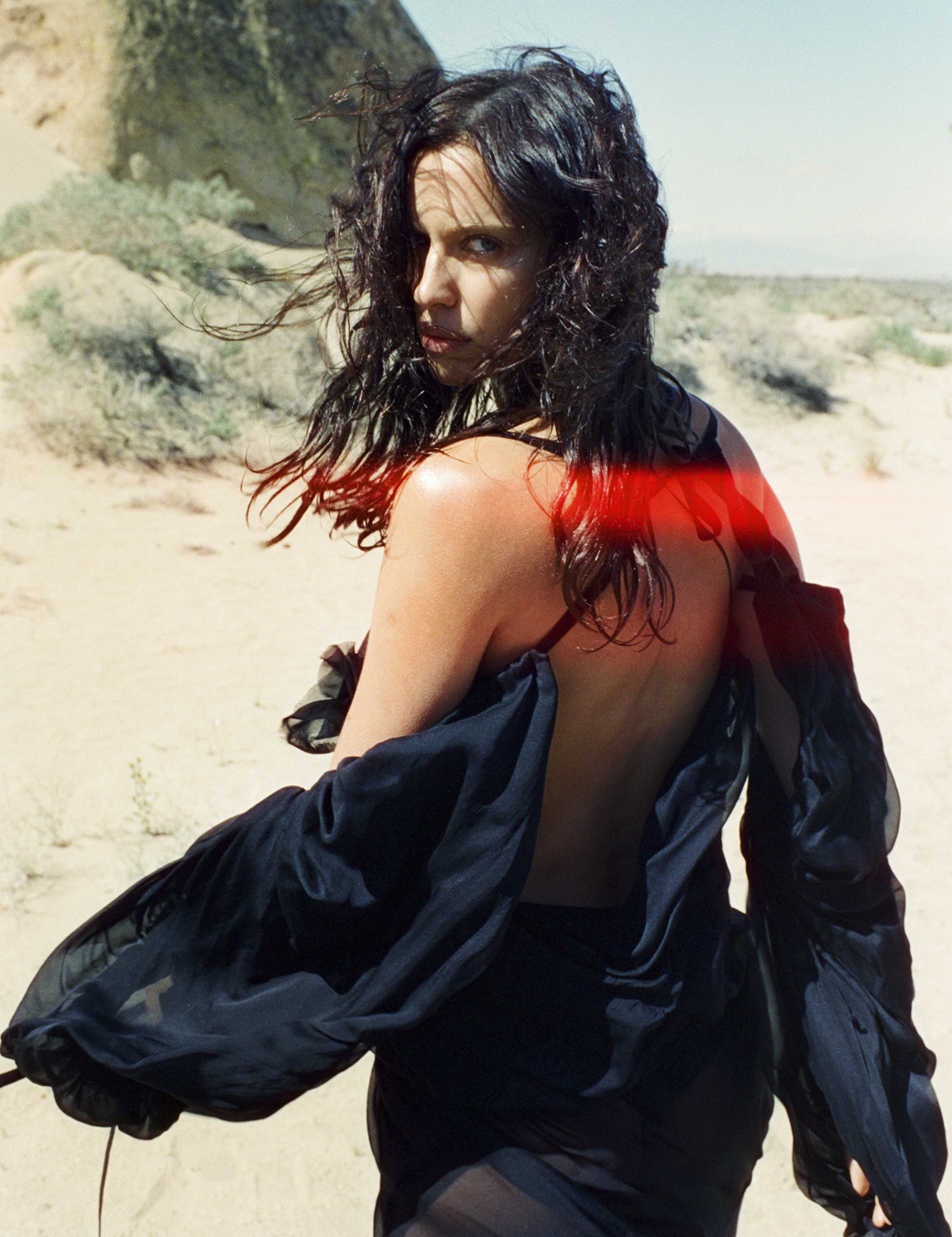
For all the similarities between Ludovic and his fashion forebear, maintaining an acute awareness of their differences is a priority for him, particularly when distinguishing between his creative approaches at Ann Demeulemeester and his namesake brand. While some may have been surprised at the lack of trompe l’oeil textile treatments and intricate crystal-spangled couture pieces that have become Ludovic’s hallmarks, omitting them from the line-up at his new gig was a conscious choice. “For one thing, I didn’t want to create something where people would be like, ‘Oh, surprise! He brought crystals to Ann…’,” he sarcastically drawls. “But also, I’m a Virgo! I need things to be very clear and very defined. Obviously, since I’m the designer for both brands, it’s impossible not to think of them as being in dialogue with one another, but this has given me an opportunity to consider how they can relate to each other in some ways and be different in others… believe me, it’s given me a newfound respect for designers that do two houses at the same time!”
That Ludovic’s debut for Ann Demeulemeester demonstrated his creative merit is widely accepted, but how it will be received by customers – both long-standing brand loyalists and those discovering the brand for the first time – remains to be seen. After all, fashion is an industry where a harmony between creative originality and commercial appeal is equally necessary for success. With an imbalance on either side resulting in the reputational damage of being seen as culturally irrelevant, or the financial qualm of squandering a lot of cash in return for little other than critical acclaim, it’s a space in which a dream creative directorship can quickly turn into a nightmare of accountability – as anyone who’s seen Kingdom of Dreams knows well.
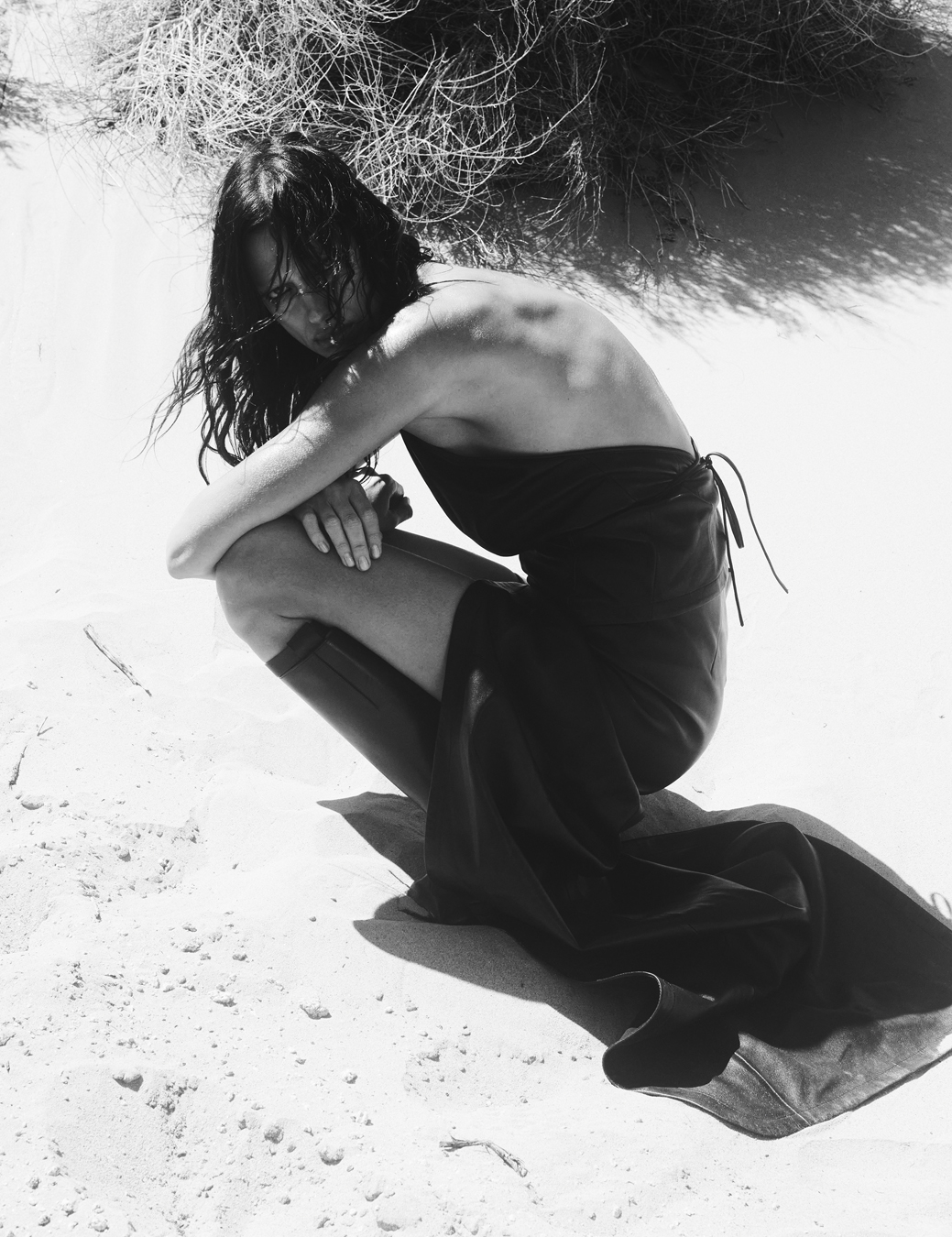
It’s far from an easy game, and it’s one that numerous designers have taken dramatic tumbles in playing, but Ludovic remains clearheaded in his approach. “Ultimately, Ann Demeulemeester isn’t a billion-dollar business. There are designers who are proposed to these huge houses, and all of a sudden they have to do countless collections and product launches a year, but I’m only doing one show a season and my focus is on being creative and having fun with the DNA of the brand,” he says. His confidence is, of course, probably bolstered by the fact that – as far as the wholesale numbers imply – his debut has been a commercial success, with the new pieces he introduced to the brand’s catalogue performing especially well. “We’ve had amazing feedback. People really seem to want something that respects the DNA of the brand, but at the same time feels like something they haven’t seen before,” he says. “Of course, people deeply admire the archive, but creating the desire for newness is essential for a heritage brand.”
A contributing factor in generating that desire was, no doubt, the scene that played out at Vanity Fair’s annual post-Oscars party. On one of the world’s most watched red carpets, not one, not two, but three full looks from the collection, which had debuted only a week before, appeared on three of the most emblematic young ambassadors of fashion and pop culture today. Between Hunter Schafer in the show’s closing look, a white leather-feather and fishtail skirt; Manu Rios in a bare-chested, slim-fit suit; and Vittoria Ceretti in a sensuously draped naked gown, the result was one of those rare celebrity fashion moments that took the internet by storm.

“It was almost like an extension of the show,” Ludovic reflects. “It brought it to life in a different way, one that’s actually real, and helped it live beyond the catwalk. It was so nice to see it catch on so quickly, and cut through the noise to become a real pop cultural moment.” That said, it wasn’t without careful consideration. “Within the context of Ann and her legacy, we knew we had to be really careful,” continues Ludovic. “When it comes to seeing her clothes beyond fashion, in entertainment or culture, we’re more used to seeing them on someone like Patti Smith, so we had to carefully consider who represents the brand today. I think someone like Hunter is such an incredible talent and muse and, I mean, there aren’t a lot of people out there who are going to dare to put all their trust in a feather!”
Ann Demeulemeester purists may see this celebrity-oriented turn as somewhat out of step with the codes of a brand so commonly associated with under-the-radar discretion. Still, different an approach as it may be, it’s one that Ludovic sees as a natural pathway for any brand operating today. “I think that’s where Ann and I differ a little bit,” he concurs. “My perception of Ann is that she lets her work and her fashion shows talk, rather than doing lots of public-facing interviews and campaigns, which I really respect. But I think that, as a young designer taking over a young heritage house, there’s a lot more to being a designer and creative director today. You’re in charge of so many other things, and it can’t just be the clothes that come from the heart – it has to be the messaging, too. You have to embody the brand in a way that feels accessible.”
Accessible, however, needn’t mean that it’s for everyone, and that perhaps is the most fundamental similarity that binds Ludovic and the founder of the house he’s now custodian of. While Ann may have built her community by quietly attracting a community of like-minded individuals through little other than the clothes she designed, Ludovic has amassed his own by broadcasting his values through the channels at his disposal. Both ultimately share a staunch, uncompromising conviction in sticking to their guns, and a faith that there are plenty out there who think and feel just how they do. “I think that’s what’s most exciting about this new chapter,” Ludovic surmises. “Having put out my first show, people now know what my take on the brand looks like.” Now, it’s just a matter of putting a message in a bottle out to see who’s going to catch it.
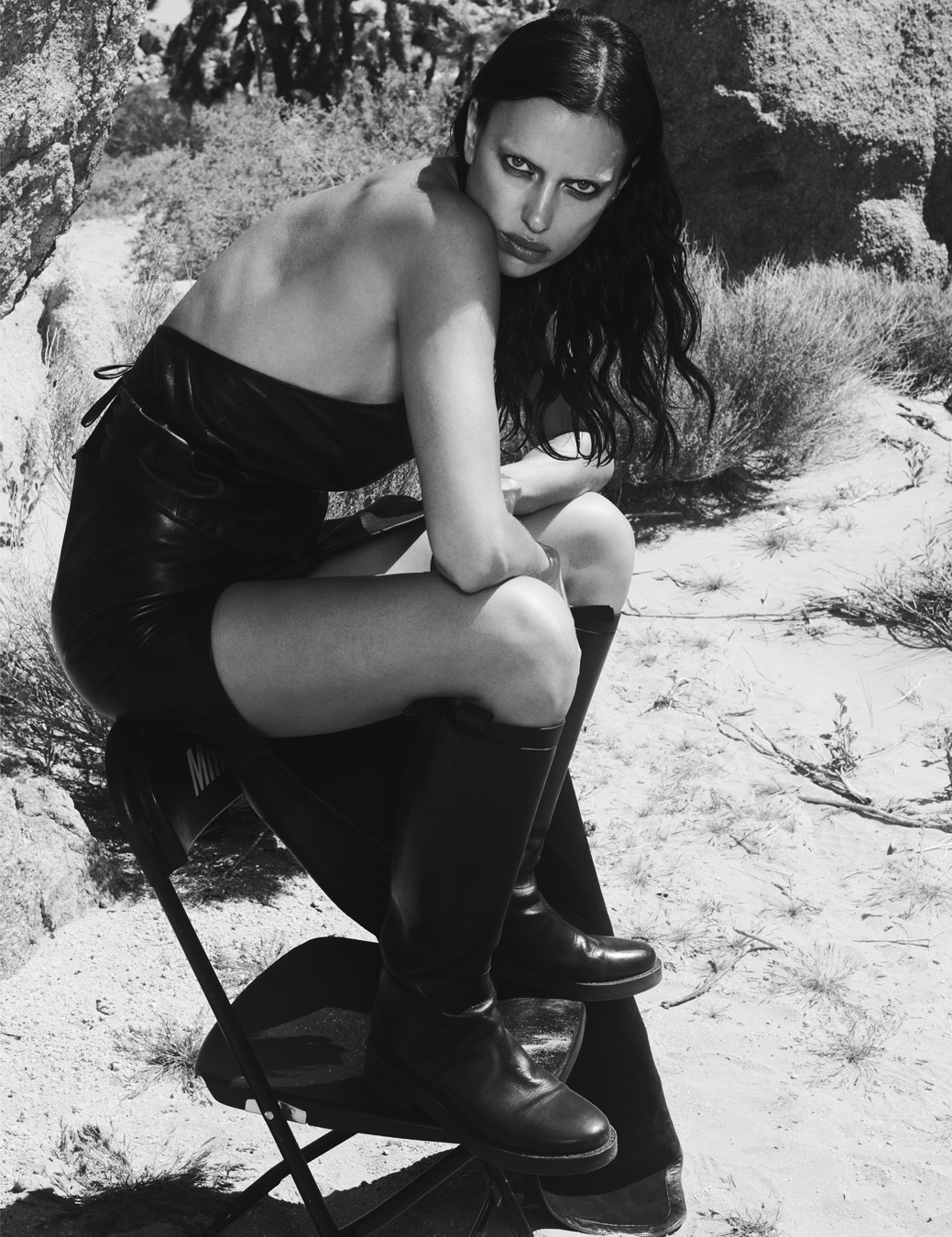
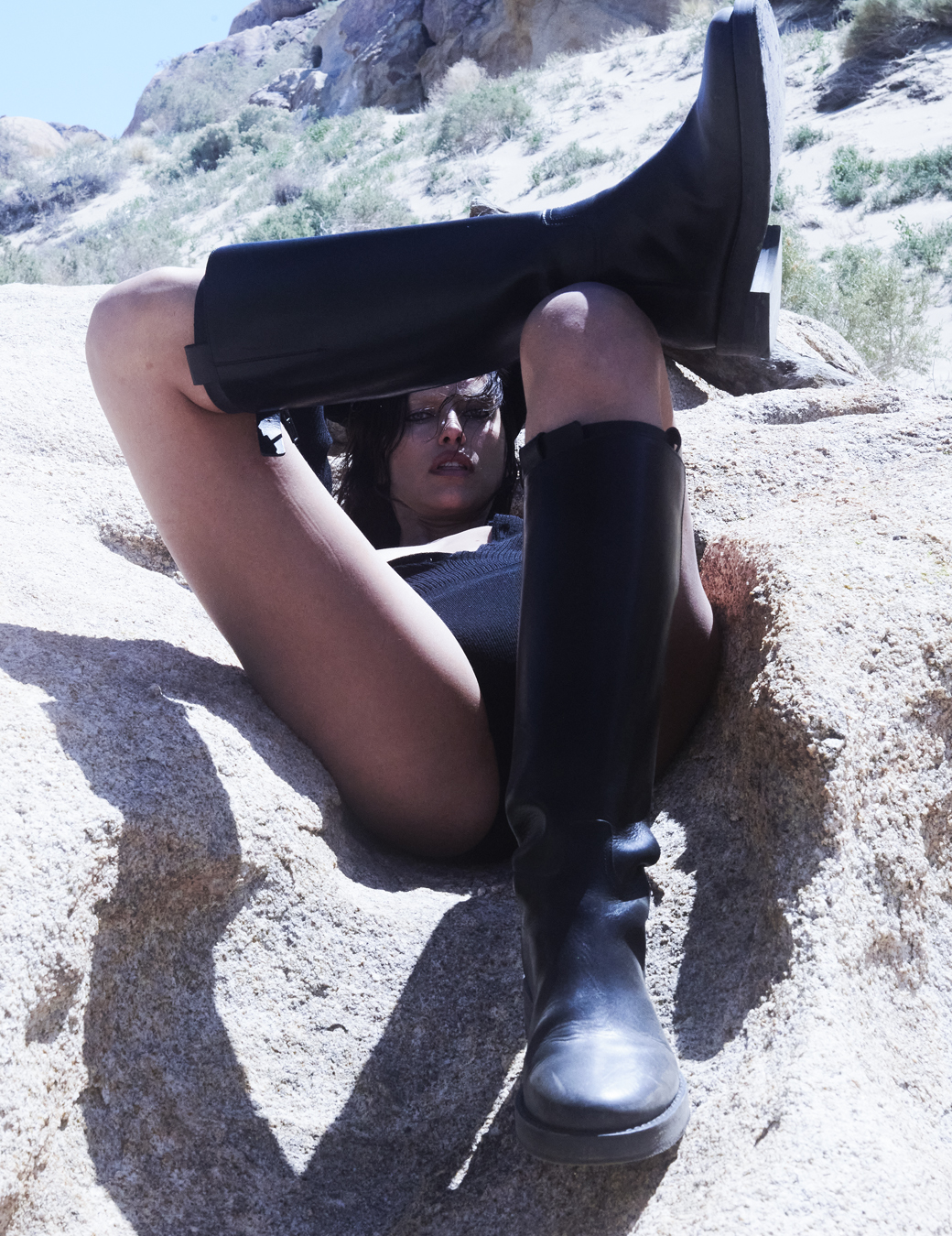
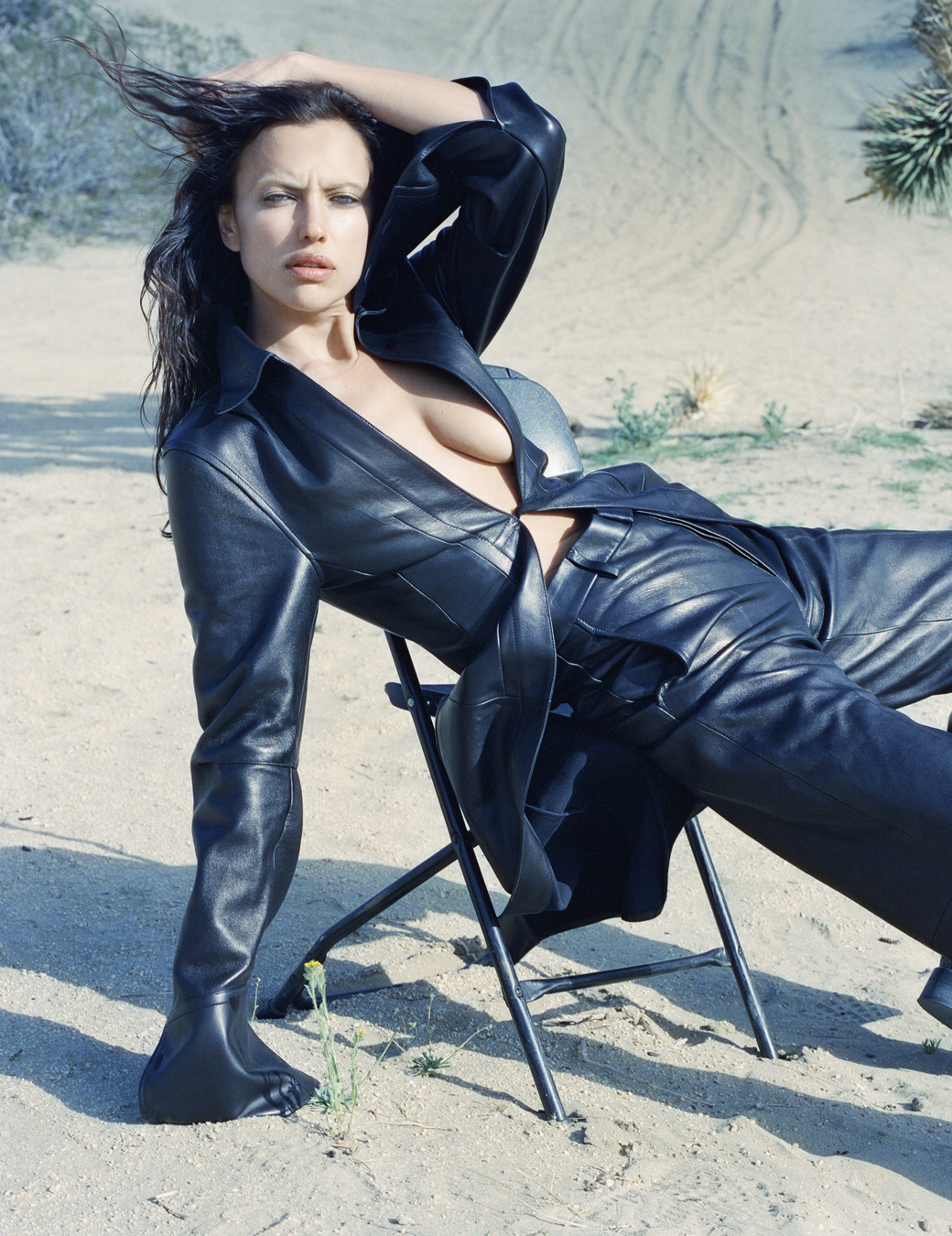

Credits
Photography Drew Vickers
Fashion Alastair McKimm
Hair Esther Langham at Art + Commerce using Oribe
Make-up Yadim at Art Partner
Set design Spencer Vrooman
Photography assistance Nate Margolis and Annabel Snoxall
Fashion assistance Madison Matusich and Taylor Wood
Make-up assistance Lilly Pollan
Set design assistance Will Cragoe
Executive producer Alexis Piqueras at AP Studio, Inc.
Producer William Galusha at AP Studio, Inc.
Production co-ordinator Syd Widis
Production assistance Lance Williams, Rich Monteiro, Anatalia Zavaleta, Amir Tillard and Nick Haaf
Casting director Samuel Ellis Scheinman for DMCASTING
Model Irina Shayk at The Society
All clothing ANN DEMEULEMEESTER AW23

